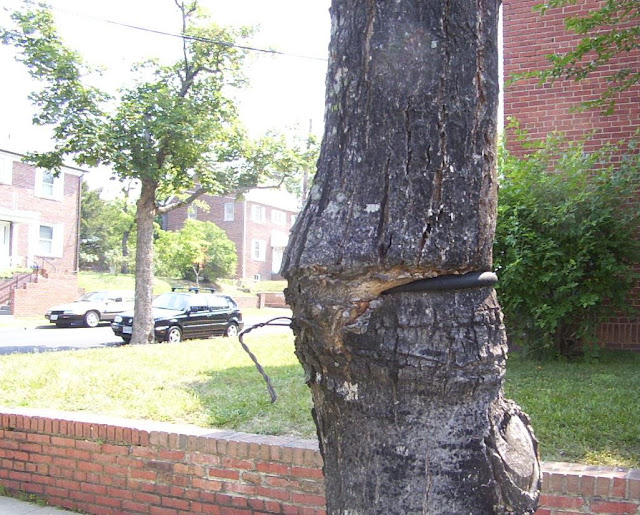
Casey Trees' High School Summer Crew takes to the streets for the first time today, kicking off an eight-week adventure of tree care and professional development. This year's crew is a diverse group of 11 high school students from the D.C. metro area. Selected from more than 100 applicants, the 2010 summer crew contains some of the area's most promising young leaders.
The summer crew will be responsible for tree stewardship activities for the next eight weeks. Tree care — watering, weeding, mulching, and pruning — is their primary responsibility. Interspersed throughout the summer will be activities in which the crew will learn about career opportunities in arboriculture.
These activities include:
- Climbing giant oaks at the National Arboretum
- Planting elms on Daingerfield Island with the National Park Service
- Tree Space Design training with the Casey Trees director of Planning and Design
- A GIS mapping tools exercise at the National Zoo
While most of the crew will travel in trucks, three will be on two wheels. Casey Trees' Water By-Cycle, the nation's first bicycle-powered program to water and care for a city's trees, is back in action this year. Led by an adult Casey Trees employee, the Water By-Cycle crew uses pedal power to get around the city. This enables them to travel faster, avoid traffic snarls and not worry about looking for parking spaces. The crew accesses water from D.C. fire hydrants with permission from DC Water. Casey Trees pays for the water used. Along with tree care and career opportunities, the Casey Trees summer crew will also learn job responsibility. This is the first job for some of the crew members, and the teamwork and leadership skills they learn will serve them well in the future.
Summer crew member Cartrell Williams, a senior at Spingarn High School in Ward 5, probably put it best when he said: “My hope is that together, we can make the community a better place. I believe this project will not only help me, but I will also take pride in knowing I can help the environment."
In the coming weeks, each crew member will write a blog post chronicling their summer experiences. In the meantime, check out their bios on the Casey Trees website.










